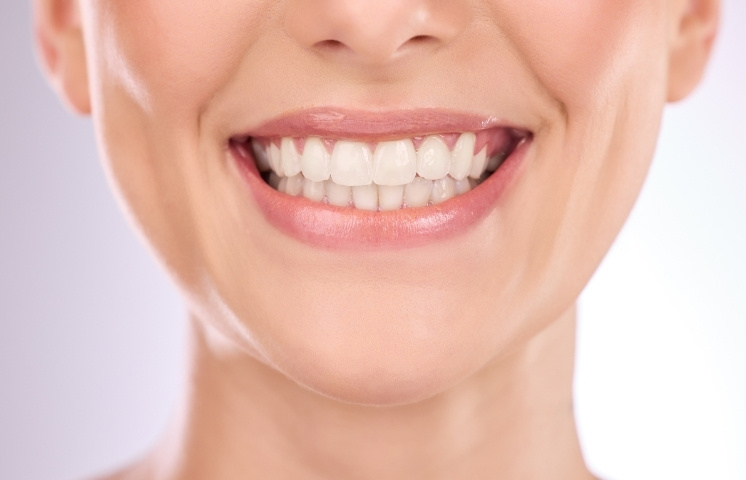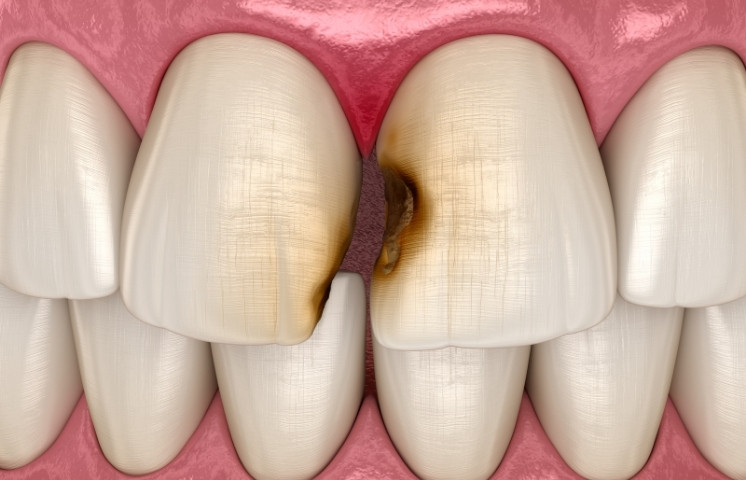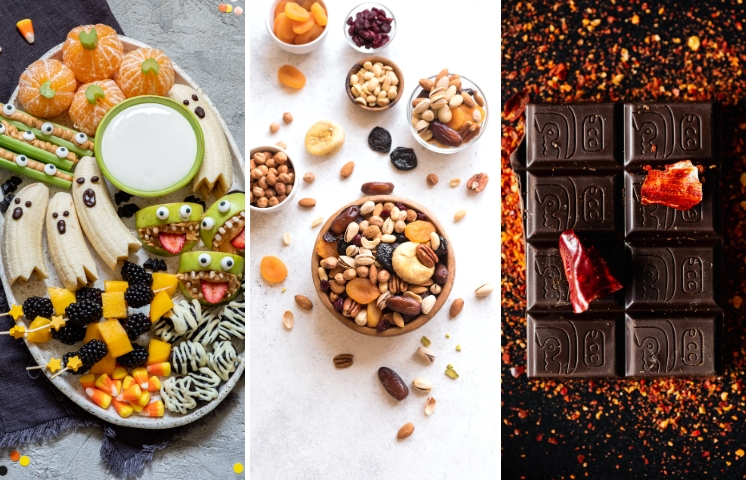We are not a registered Medicare/Medicaid Provider

Ever wondered what those dark spots on your teeth might be? They could be cavities, also known as dental caries. Cavities are permanent damage to the hard surface of your teeth (enamel) caused by a process called tooth decay.
Here’s a closer look at how cavities form:
- Plaque Buildup: When you eat or drink, especially sugary or starchy foods, bacteria in your mouth multiply and form a sticky film called plaque on your teeth.
- Acid Attack: Plaque bacteria feed on sugars and starches, producing acids as a waste product. These acids erode tooth enamel over time.
- Cavity Formation: If plaque isn’t removed regularly through brushing and flossing, the acids can eventually create tiny holes in your enamel, leading to cavities.
While diet plays a significant role, other factors can also influence cavity formation:
- Oral Hygiene Habits: Brushing twice daily, flossing once a day, and using mouthwash can significantly reduce plaque buildup and lower cavity risk.
- Genetics: Some people are naturally more susceptible to cavities due to their enamel composition or saliva production.
Does Chocolate Directly Cause Cavities?
Chocolate, a delightful treat enjoyed worldwide, often gets a bad rap for causing cavities. But is this entirely true? Let’s examine the science behind it:
- The Sugar Culprit: The primary culprit for cavities in chocolate is sugar. When bacteria in your mouth come into contact with sugar, they produce acid that attacks tooth enamel. The more sugar you consume, the higher the risk of cavities.
Here’s a breakdown of different types of sugars:
Free Sugars: These are the added sugars found in processed foods like chocolate, candy, and sugary drinks. They are the main concern for cavity formation.
Natural Sugars: These occur naturally in fruits, vegetables, and milk. While they can still contribute to cavities, they are often accompanied by beneficial nutrients that can help mitigate their impact.
- Cocoa and Cavities: The good news is that cocoa itself, the core ingredient of chocolate, doesn’t directly cause cavities. In fact, some studies suggest that cocoa may even contain properties that can help fight tooth decay.
Now, let’s explore the impact of different chocolate types on cavities:
- Dark Chocolate: Generally considered the better choice for your teeth, dark chocolate contains a higher percentage of cocoa (70% or more) and less sugar compared to milk chocolate. This translates to lower cavity risk.
- Milk Chocolate: A popular choice, milk chocolate contains a significant amount of sugar and milk solids, increasing the risk of cavities compared to dark chocolate.
- White Chocolate: While it has a creamy texture, white chocolate doesn’t contain cocoa solids. However, it often has a high sugar content, making it just as cavity-promoting as milk chocolate.
How to Enjoy Chocolate Without Harming Your Teeth
Chocolate lovers, rejoice! You can still indulge in your favorite treat without compromising your oral health. Here are some key strategies:
1. Choose Cavity-Fighting Chocolate:
- Opt for Dark Chocolate: Aim for dark chocolate with a minimum of 70% cocoa content. This provides a higher concentration of beneficial cocoa flavanols and less sugar.
2. Portion Control is Key:
- Mind Your Indulgence: Limit your chocolate intake. A small square or two of dark chocolate is a more responsible choice than a large bar.
3. Timing Your Chocolate Fix:
- Eat Chocolate with Meals: Consuming chocolate with meals can help neutralize the acids produced by plaque bacteria more quickly.
4. Maintain Good Oral Hygiene:
- Brush Twice Daily: Regular brushing with fluoride toothpaste removes plaque and leftover chocolate particles, reducing cavity risk.
- Floss Once a Day: Flossing reaches between teeth where brushing can’t, removing plaque and preventing cavities in those hard-to-reach areas.
- Consider Mouthwash: Using a fluoride-containing mouthwash can provide additional protection against cavities.
5. Schedule Regular Dental Visits:
- Don’t Skip Checkups: Regular dental checkups and cleanings allow your Haymarket dentist to identify and address any potential cavities early on.
By following these tips, you can enjoy chocolate guilt-free and maintain a healthy smile.
Additional Tips for Healthy Chocolate Consumption
Looking for ways to elevate your chocolate experience while keeping your teeth happy? Here are some bonus tips:
- Alternative Sweeteners: Some chocolates use sugar alcohols or artificial sweeteners instead of sugar. While generally better for your teeth, it’s important to choose sugar alcohols that don’t cause digestive issues and consume them in moderation.
- Healthy Pairings: Enhance your chocolate experience by pairing it with healthy options like fruits, nuts, or yogurt. These add vitamins, minerals, and fiber to your treat, promoting overall health.
- Sugar-Free vs. Dark Chocolate: Sugar-free chocolates can be a good option, but some may contain sugar alcohols or artificial sweeteners that can affect some people. If you have concerns, opt for high cocoa dark chocolate with minimal added ingredients.
Remember, moderation is key! Enjoying small portions of your favorite chocolate occasionally is a better approach than indulging in large quantities frequently.
Get Your Smile Back
Enjoy your favorite chocolate treats with a smile! By understanding the science behind cavities and following these tips, you can indulge in moderation without compromising your oral health. Remember, a balanced diet and consistent oral hygiene are key to maintaining healthy teeth for life.
Frequently Asked Questions
Sugar-free chocolate may not directly cause cavities, but some sugar alcohols used as substitutes can cause digestive discomfort in some individuals. Additionally, some sugar-free chocolates may still contain small amounts of sugar, so check the label carefully.
While white chocolate may sound like a healthier choice due to its lack of cocoa, it often has a high sugar content, making it no better than milk chocolate for your teeth. Opt for dark chocolate with a high cocoa percentage for a healthier alternative.
Sugar alcohols like xylitol and erythritol are generally considered safe for teeth as they don’t promote cavity formation. However, consuming large quantities can cause digestive issues. Artificial sweeteners like stevia are another option, but some people find them to have an aftertaste.



